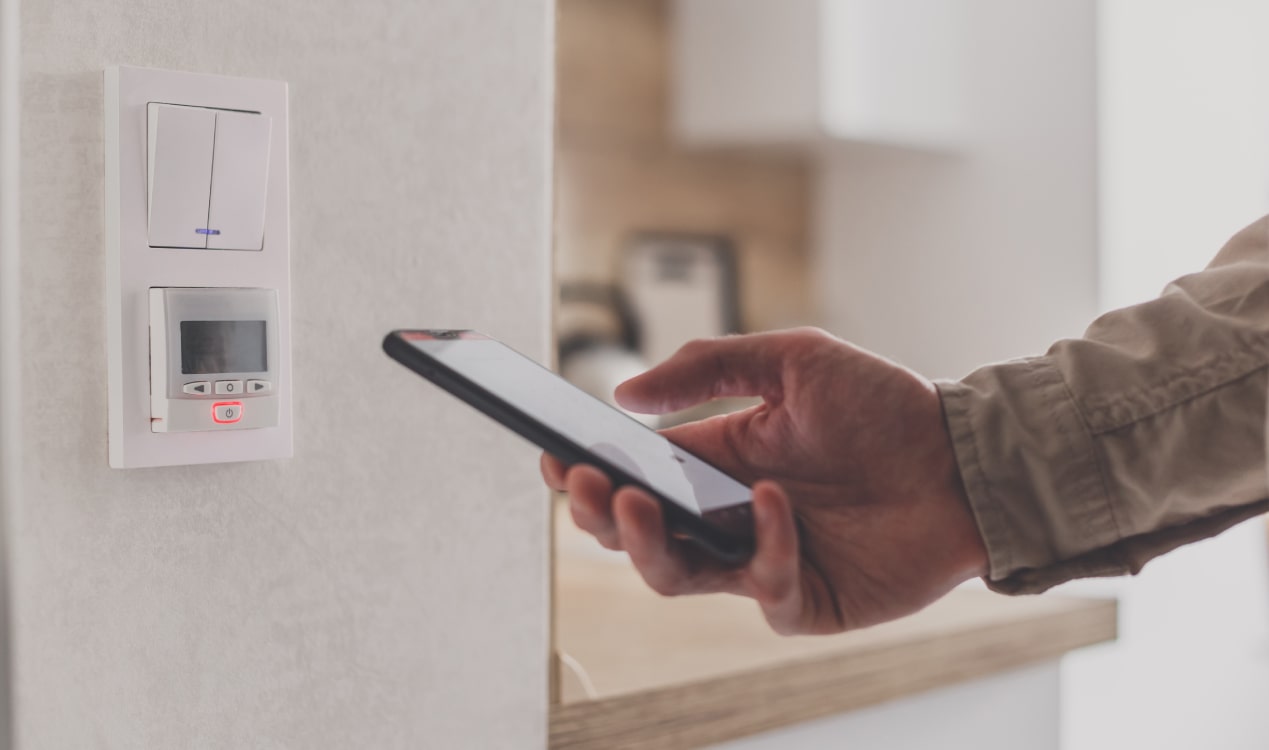When researching home heating options, be sure to consider radiant floor heating; it’s one of the most comfortable and efficient choices available today.
Although warm and cozy floors sound amazing, you may be asking: How do heated floors work? Is it worth the effort to install underfloor heating? Who do I turn to with my questions about radiant floor heat?
Read on to learn more about this unique heating solution.
How Does In Floor Heating Work?
So here’s how radiant heat works! Heat radiating from underneath a floor rises to warm a room gently, but that’s only half of the story. Heated floors also warm everything they touch, bringing the entire room to your desired temperature quickly. It’s a magical feeling and a completely silent process.
On the other hand, conventional heating systems, like forced air heating, work hard to increase the temperature of the air and then proceed to push it through ducts. Unfortunately, while the warm air travels to reach all the cold spots in your home, some heat is inevitably lost.
Radiant floors are much more energy-efficient than baseboard heaters or forced air systems and thus keep your energy bills in check. And, when you add a programmable thermostat to the mix, you reduce your operating costs even further.
For these and countless other reasons, homeowners choose to install radiant floor heating.
Types Of In Floor Heating
There are two common types of radiant floor heating systems, with the main difference being the heat source itself.
An electric system utilizes a series of heating cables, while hydronic radiant heat systems send heated water through tubing beneath your floor covering. Both systems benefit from the placement of insulation boards beneath the heating elements to help reduce any possible heat loss. (You don’t want any precious warm air to escape into the subfloor!)
Electrical In Floor Heating
Resistance cables, often embedded in heating mats, produce the heat in an electric radiant floor heating system. The wires are then connected to a thermostat.
Hydronic In Floor Heating
Hydronic systems use a boiler to heat water and a pump to distribute it. Then, as hot water circulates through a system of flexible tubes under the floor, your room reaches a higher temperature.
(Note: The cost per square foot tends to be higher for hydronic underfloor heating systems.)
How To Use An In Floor Heating System?
While pros and cons of underfloor heating systems exist, they are extremely easy to use and durable.
As mentioned before, we recommend using programmable thermostats. When you install home automation and set a smart thermostat to activate your heated floors at designated times throughout the day, you’ll save money on your electricity bill.
Like many families, you might choose to heat a single room with radiant heating vs. the whole house. (This is called spot heating.) A bathroom or bedroom would be a great place to start, especially if you plan to renovate soon.
Just imagine enjoying warm floors first thing in the morning—set your smart thermostat to activate your heated floors 30-40 minutes before you get up!
In addition, your underfloor heating system is built to last for a very long time. The materials used in both an electric radiant floor heat system and the hydronic version are remarkably tough. To reduce energy costs during the wintertime and ensure your system is working correctly, have a radiant heating system professional perform annual maintenance before the cold weather sets in. Your system will run better if you take good care of it.
Who Can Install In Floor Heating?
Don’t attempt to install an underfloor heating system on your own. Instead, always hire a certified radiant heat installer to ensure the job is done right and safely.
A qualified electrician must complete all the electrical work, from properly wiring the mats to connecting your system to the thermostat.
Sun Solar and Electrical professionally installs Nuheat in floor heating systems throughout Calgary. With extensive experience, our technicians can answer any questions you have, including the best flooring materials to maximize heat conductivity. Or, if you run into any problems after installation (e.g. your circuit breaker keeps tripping when you turn on your underfloor heating system), we can offer advice and handle any repairs.





